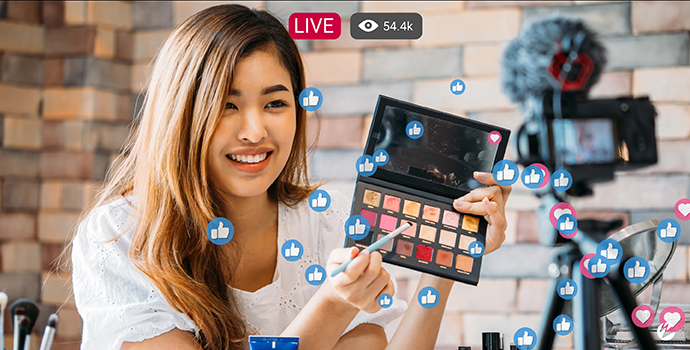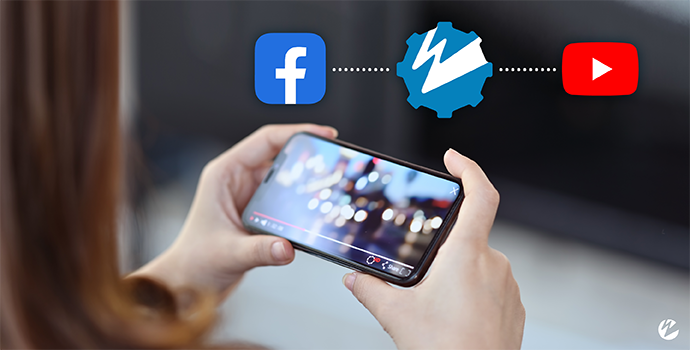How to Monetize Your YouTube Channel

YouTube is one of the most well-known and influential video platforms around. It dominated the video landscape before outlets for short-form content like Facebook, TikTok, and Instagram reels came around. It’s still the world’s go-to for videos longer than a few minutes and boasts 2.2 billion monthly active users, making it the second most popular social media site after Facebook (2.9 billion users) in 2022.
Launched in 2005, it only took three years before YouTube rolled out an advertising program and YouTube Studio monetization that enabled individual creators to earn revenue from their channels. This was the birth of a YouTuber, which describes individuals or teams who produce enough popular content to make a living off the platform.
Now, countless people consider themselves YouTubers or hope to become one. If you’ve decided YouTube is the right platform for you instead of a customized one, here are a few ways to monetize your channel and turn video creation into more than just a hobby.
Table of Contents
YouTube Studio Monetization: YPP
One of the most common ways to monetize a YouTube channel is to sign up for the YouTube Partner Program (YPP). This program allows you to take a cut of the money generated from ad views that accompany your videos. As such, the more significant viewership you have, the more you can make.
You’ll need to have the following before you can apply for the program:
- 1,000 subscribers already
- At least 4,000 watch hours within the past 12 months
- An AdSense account (this one is important; it’s Google’s branded advertising platform that sells ad space across various internet channels. You’ll need to link these accounts together)
- No community guideline strikes against your channel
- Two-step verification enabled
You’ll also need to live in a place where the YPP is available and follow all of YouTube’s monetization policies, such as providing accurate video descriptions and thumbnails and avoiding copyright issues (such as using background music you don’t have rights to or plagiarizing other creators’ content, even unknowingly).
YouTube will take approximately 30 days to review your application and decide if you qualify for the partner program. If accepted, you can enable YouTube Studio monetization through the tab of the same name and follow the provided instructions.
Remember that YouTube will continually monitor your channel for policy and Terms of Service compliance, so it’s imperative to follow the rules to maintain monetized status.
So, how much can you make from YouTube ads? The average YouTuber earns $18 per 1,000 ad views, and viewers have to watch the whole ad, not just part of it for you to get paid (coming to around $3-$5 per 1,000 while video views). The YPP is the easiest and most common way to monetize a YouTube channel, but you won’t start rolling in money until your online presence grows substantially.

YouTube Premium Memberships
You have less control over this YouTube Studio monetization method, but it’s worth mentioning because many creators have questions about it. The whole purpose of YouTube Premium is to watch videos without ads, so if paying members watch your videos with ads removed, how do you make money?
Fortunately for you, YouTube still distributes fractions of subscription payment revenue to creators. This amount depends on how many Premium members watch your content, so it’s difficult to predict, but you don’t have to worry that viewers seeking ad-free videos won’t generate income for you.
Subscriber Patronage
This YouTube monetization technique is possible without enrolling in YPP: asking your audience to support you. During your videos (preferably at the beginning or end; no one likes when the core content is interrupted), request viewers to donate to your channel through the Patreon platform on a one-off or monthly basis. This way, viewers who get enough value out of your content to pay for it can chip in whatever they feel is appropriate or within their means to give.
It’s unlikely you’ll make a living monetizing your YouTube channel this way because the number of viewers who contribute will be dramatically lower than those who watch, but it might be enough to cover the cost of your video production until you can enroll in YPP (you can, of course, do both).
Subscribe and stay up to date
Learn the latest tips and tricks in video marketing and simulcasting to social media.
SubscribePersonal or Business Channel Memberships
Back to a native way to monetize your channel within YouTube: Channel Memberships. This feature was YouTube’s response to Patreon mentioned above because it allows creators to charge subscribers for access to exclusive content. For you, that could include behind-the-scenes looks, sneak previews, entirely unique membership-only videos, or something else that incentivizes viewers to pay.
To qualify for the Channel Membership feature, you must:
- Be part of the YPP
- Live in a location where it’s available
- Have over 1,000 subscribers
- Be 18 or older
- Not have excess ineligible content
Besides, of course, complying with YouTube’s terms and conditions. Notably, you must also not run a “Made for Kids” channel.
You can charge anywhere between $0.99 and $100 per month for a channel membership. This way, you can promote your exclusive content in-video to encourage viewers to sign up, promising a different combination of perks depending on the level of membership (there are five, and you can arrange and distribute perks how you wish).
Remember, though: you only get 70% of what your subscribers pay. YouTube takes the other 30%.

Brand Sponsorships and Affiliate Marketing
YouTube Studio monetization through brand sponsorships and affiliate marketing are tried-and-true ways to earn income. The latter is easier: in affiliate marketing’s case, a partner company gives you a personalized sales link you can distribute to your audience through your videos and captions. You get a cut of the revenue whenever someone purchases a product or service through your link.
Brand sponsorships, however, are a bit trickier. A significant question you’re likely asking is, how big of an audience do you need, and how do you find sponsorships?
You need a sizable enough audience to make sponsorship worthwhile to a company in an industry related to your channel’s content (for example, if you post about video games, a video game studio could sponsor some of your videos to promote their latest games). This could be as high as 10,000 subscribers at minimum. The larger your audience, the more you can charge, but anything less than 10,000 likely won’t be attractive to even smaller organizations.
Keep in mind that company sponsorships rarely mean they sponsor your entire channel and you become the equivalent of an in-house video producer. Rather, they sponsor an individual video or series of videos. This arrangement works similarly to traditional influencer marketing where brands pay you for a shoutout, product review, reveal, or other promotion.
It’s possible to find brand sponsorships outside of YouTube’s platform by approaching companies and offering to promote their business. They may also choose to approach you if your channel is prominent enough. If you’re new to YouTube Studio monetization, though, you can use YouTube’s native BrandConnect. This feature makes it easier for brands and relevant influencers to find each other (similar to TikTok’s Creator Fund), so if you and a company hit it off, it could be the start of a lucrative business relationship.

Making Money on YouTube
There are other more traditional ways to monetize a YouTube channel, such as selling branded merchandise on Shopify and promoting it through your videos. Another option is live streaming and soliciting donations through Super Chats and Super Thanks. If you choose to go this route, Wowza Video enables you to simulcast live streams to multiple social media platforms at once, including YouTube. You can also record live streams and publish them on YouTube later, further growing your channel and opening doors for both donated and ad-based revenue. Check out our tutorials for simulcasting from Wowza Video as well as our software-based platform, Wowza Streaming Engine.
YouTube Studio monetization can pay off, but if you don’t want to put all your eggs in one basket, try Wowza Video to also take advantage of Facebook, Instagram, and other platforms’ monetization opportunities simultaneously and put your content in front of as large of an audience as possible.




